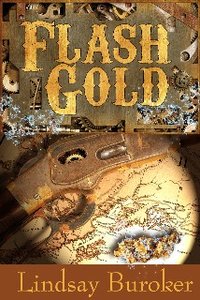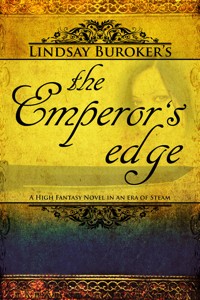
 A GUEST BLOG BY AUTHOR LINDSAY BUROKER. E-Publishing: Advantages and Disadvantages
A GUEST BLOG BY AUTHOR LINDSAY BUROKER. E-Publishing: Advantages and Disadvantages
Have you been wondering if you should forget agents and publishing houses, turn your novel into an ebook, and start a new life as an independent author?
Thanks to the rising popularity of e-readers (Kindle, Nook, iPad, etc), the number of authors choosing to e-publish has grown tremendously, and it’s hard not to get excited when you read about the indie success stories (some authors making six figures and others receiving traditional publishing contracts with lucrative advances). That said, it’s not a road to riches for most, and it’s not the path for everyone. But it can work for some.
I published my first ebook, a fantasy adventure novel called The Emperor’s Edge (http://amzn.com/B004H1TDB0) in late December 2010, and I’m about to publish the sequel. I also published another stand-alone novel and a couple of short-story collections. I’m not one of those folks making six figures, or anything close to a full-time income for that matter, but I can see the potential. I’ve made back the initial costs of putting the ebooks together (editing, formatting, having cover art designed, etc.), and I’m making a modest part-time income from my writing efforts now.
While that doesn’t make me an expert on e-publishing, I figured I could offer some advice for those on the fence, trying to decide between e-publishing and pursuing a deal with an agent and a traditional house.
So, without further ado, here are some of the pros and cons of e-publishing.
Advantages of E-Publishing
It’s a speedy process.
Between the hunt for an agent, the hunt for a publisher, and the wait-time before a book is actually printed and available in a bookstore, the traditional publishing model is slow. You can expect that process to take one to two years, if you’re able to find an agent and publisher at all. A lot of people don’t, and it’s not always a reflection of talent or the saleability of a book.
It’s much different with e-publishing.
For my first ebook, it took me about a month from first deciding to publish it to having it go live. In that time, an editor proofread it, an artist created a cover, and an ebook formatter turned my Mac Pages file into something readable on the Kindle, Nook, iPad, etc. When I uploaded the finished file at Amazon, Barnes & Noble, and Smashwords (a distributor that gets your ebooks into the stores that require ISBNs), it took a maximum of two days for it to go live.
You have full control.
Everything is up to you with e-publishing. You write the story or book you want to write, and you choose the artwork. You also choose the price, and you can experiment with that price at will. This means you can tinker around and see if you sell ten times as many books at $0.99 as you do at $2.99, or if you can raise the price to $3.99 or higher and see if people will still buy.
You can also see novel sales as they’re happening, which gives you insight into what marketing tactics are paying off and which are taking up time and money and returning no profits.
You can potentially earn more money as an indie.
Like I said, this isn’t an easy road to wealth, but, because you’re cutting out the middlemen, you make more per book than you would going through a traditional publisher. Sell your ebook for $2.99 to $9.99, and you’ll earn 70% on each sale at Amazon (with similar royalty rates from other major bookstores). Compare this to the 20% or less most traditionally published authors take home.
Also, the higher prices mainstream publishers sell their ebooks for can be a sales deterrent. At $2.99, your novel might look more attractive to folks than others at $8.99 or more.
Downsides of E-Publishing.
Okay, I can see you’re getting excited, but it’s not all fun and profits, and there are reasons this path isn’t for everyone. Here are a couple of cons.
Upfront costs.
If you want to create a professional looking product, something that can compete with ebooks from publishing houses, you’ll need to invest money up front.
Unless you’re artistically inclined, you should pay for custom cover art. You’ll also want to hire someone to edit your work. It’s best to have a professional editor (you can find freelancers on any job board) do the task, someone who edits for a living and can quote the Chicago Manual of Style to you. The formatting is something you can learn to do yourself if you want to save a few bucks.
I paid $600-$800 each to put together my first two novels, and I’ve seen people spend more if they had heavy line editing done (I had several critique buddies read my work first so didn’t feel I needed that).
You’re on your own for marketing.
While traditionally published authors may complain that they don’t get much help from the publishing houses any more when it comes to marketing, you’re really and truly on your own as an indie. If you’re not willing to push your book and network online, this business is not for you.
That said, I’m a hardcore introvert who isn’t that comfortable with selling either, and I’m doing all right so far. The internet does offer many ways to market, and it’s likely you can find something that works for you as long as you’re willing to invest time in learning. Oh, yeah, and then you have to invest a lot of time in the actual marketing!
There you have it: some of the pros and cons of e-publishing. I hope this article has helped you decide wheher or not this road is right for you. If you want to learn more, please visit my e-publishing blog (http://www.lindsayburoker.com) . I talk about everything from getting started to pricing books to online promotion. If you’re curious about my work, you can also check out my Amazon book (http://www.amazon.com/Lindsay-Buroker/e/B004FSRHUE) page or my Author Page on Smashwords (Smashwords offers every ebook format out there, so it’s good for any e-reader or even online PC reading) (http://www.smashwords.com/profile/view/LindsayBuroker ).
*************************
Thank you Goblin Writer.
I’d like to add that to succeed as an indie writer/publisher, the one quality you need most is patience. With the caveat that you need to write a good novel to begin with, you may find that what starts out selling poorly can build month by month and year by year into a good income.
WHAT I’VE READ THIS WEEK—Fatal Tide by Iris Johansen. And The Ballad of Frankie Silver by Sharyn McCrumb.
All photos by Roxanne Rix.


Thank you for posting this and including links to my work! Have a great weekend! 🙂